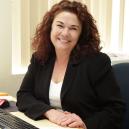Homeless Doesn’t Have to Equal Hopeless
What we know: homelessness is complex, homelessness is personal, and homeless solutions must be individualized.
Of the nearly 118,142 men, women and children struggling with homelessness in California (nearly half of all unsheltered people in the country in 2016), it’s obvious that the causes of homelessness and poverty span more than one particular issue. Loss of employment, mental health, limited affordable housing, substance abuse and system gaps, all play a role and are at times, co-occurring, which only adds to the complexity.
My previous life, filled with high tech people, fast-paced projects and strict deadlines gave me a romanticized view of how seamless and quick problems could be solved. I thought it would be just as easy to house and employ our homeless neighbors. Oh, how much I’ve learned.
CSAC’s Annual Meeting Workshop on Homelessness on Wednesday, November 29, at 1:30 p.m. will feature Chris Richardson, the Chief Program Officer from Downtown Streets Team, as one of the panelists.
In 2005, DST began changing the face of local communities through a work-experience volunteer program in which homeless individuals work on teams to clean the streets and beautify their communities. To date, more than 680 individuals have secured long-term employment, more than 760 have secured permanent housing, more than 4.3 million gallons of garbage have been removed, nearly 1.7 million cigarette butts have been terracycled to make park benches, and more than 14,000 used needles have been removed from San Francisco alone.
The model is a win-win for everyone—the individual, community members, businesses and the environment.
It’s through individualized approaches and judgment-free, compassionate surroundings that DST is able to make an impact. We’ve kept our focus on Team Member needs, and have been flexible and receptive to shifts in funding, partnerships and the array of services we offer. It’s not just job readiness, it’s everything from life skills and relationships, to education, therapy, and recovery. It’s whatever it takes to ensure our Team Members feel supported and gain a sense of pride in their work. That pride provides them with the confidence and tools to better their situations—long-term.
DST’s model to end homelessness:
- Provides meaningful daily activity and work experience for Team Members
- Shifts perceptions in the community regarding homelessness
- Encourages self-sufficiency and self-worth
- Beautifies our streets, parks and public spaces
- Is easily replicable, with more than half a dozen new cities in the growing pipeline
The issue is serious, and grassroots programs like DST’s need to expand to best meet this need. Now in eight communities throughout the Bay Area, and through 12 years of operations, there have been many lessons learned.
1. We can’t build our way out of homelessness. Though Housing First boasts many benefits, DST believes strongly that many people (when given the chance through DST’s empowerment model), can and do move from being on a list for the most expensive housing option (permanent supportive housing costs approximately $1M per person) to using a fraction of that through short-term rental subsidies (1-2 years in duration) so that they themselves become taxpayers. In fact, 87.7 percent of the people served by DST’s short-term housing subsidy program now are subsidy-free. The cost savings is significant and has boasted exceptional results for Team Members, and our community at-large.
2. Education is key! In order to change perceptions and reframe the issue to focus on the individual, DST provides Cultural Competency Seminars, Poverty Simulations and impactful Q&A sessions to businesses, schools, faith-based organizations and other committed community partners. Our Team Members are changing perceptions by publicly contributing to the betterment of their community. Debunking myths surrounding homelessness not only makes our Team Members feel better, but makes the fabric of our community stronger, and smarter.
3. You must include homeless men and women in their own recovery. Ultimately, it’s their life and we shepherd them through the weeds to first identify their barriers, then remove those barriers to reveal their potential. DST’s peer-to-peer outreach model provides opportunities for Team Members to mentor and onboard additional members. No one can speak to the process, the support and the success better than someone who has gone through it. The overall quality of life for Team Members has increased significantly, with recent data from internal surveys showing that 93 percent of Team Members felt an increase in their self-worth. Our paramount focus is on renewing that dignity.
4. Homelessness is an experience, not an identity. As service providers, we’re asked daily “what can I do?” The warmth of a smile and sincerity in a greeting goes an exceptionally long way. Bigger than the funding, greater than the partnerships, is the impact of a kind greeting. “Just say Hi!”
“It’s possible for your life to turn around. If you go after what you want, you can obtain it. I’m making more money than I ever have before and I’m living in my own place – that I obtained myself.”- Holly, DST Team Member












































